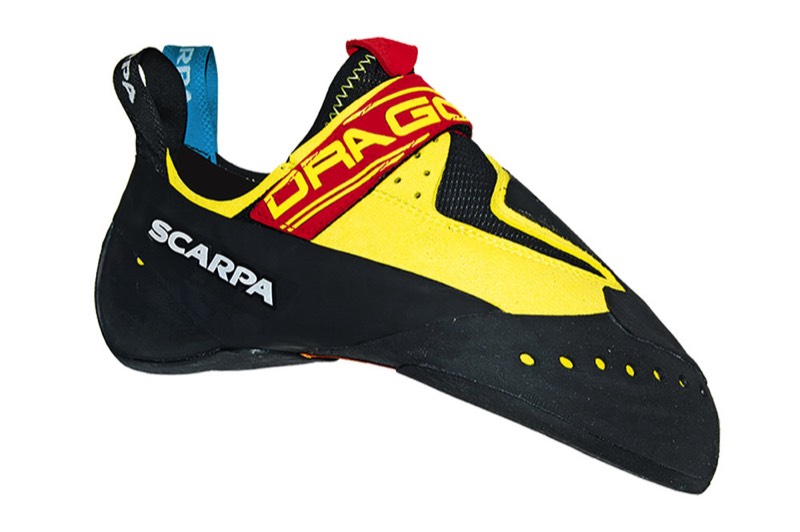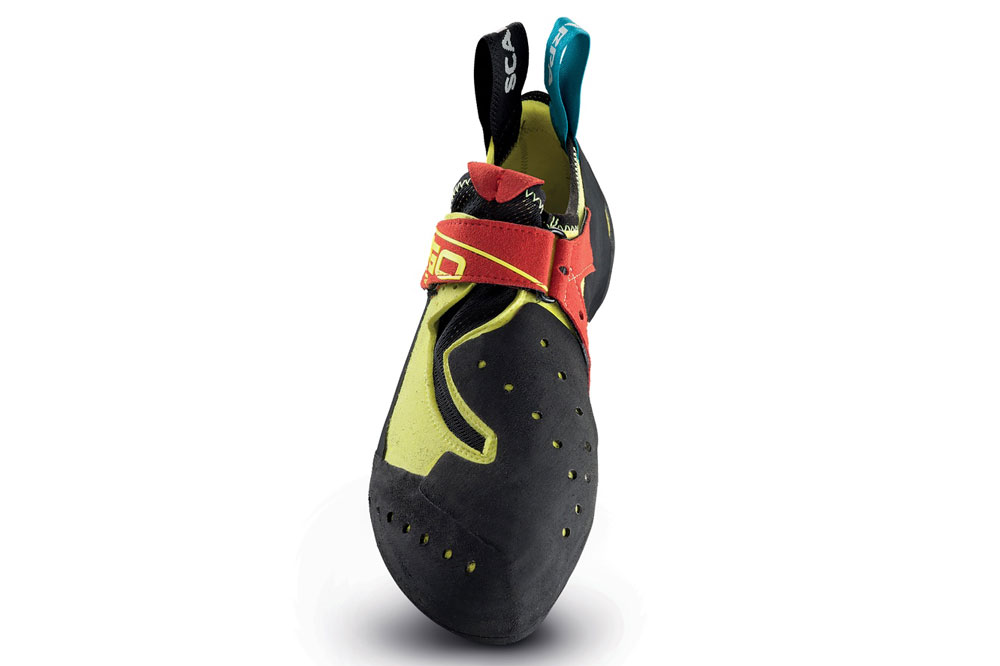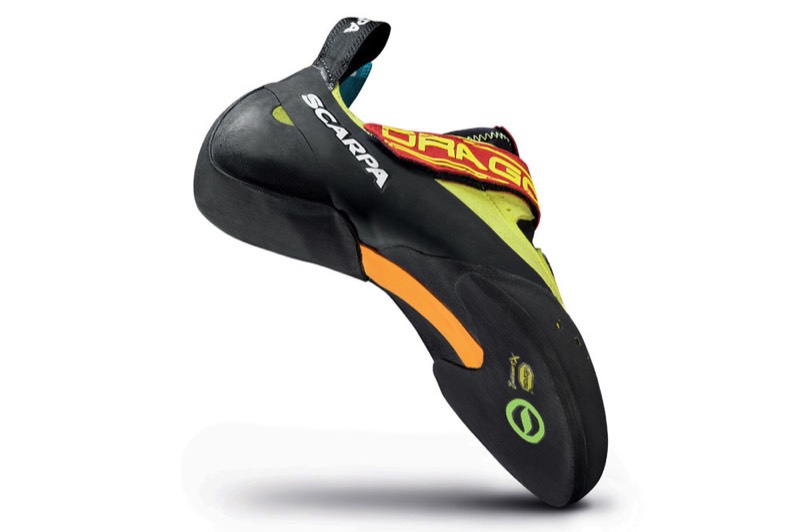Scarpa Drago – Standard-setting performance for hard redpoints and difficult boulder problems.
Every few years, a climbing shoe manufacturer will claim that they’ve produced a shoe that delivers the foot-hugging fit and sensitivity of a rubber-covered sock. On the surface, this sounds like a good idea. Unfortunately, in practice, these types of shoes often fail to deliver on their promised performance. Sure, soft Rubber-Covered Socks (RCS) are great for pawing your way up steep featured jug-hauls. But they become next-to-useless when you have to step on a small foothold. The soft uppers and similarly-soft midsoles usually provide very little support and limit climbing performance on routes or problems with more realistic (read: smaller) footholds.

Scarpa Drago
An ideal RCS would also perform on smaller and more technical holds. Say hello to the Scarpa Drago! Created by legendary climbing shoe designer (and badass climber) Heinz Mariacher, the Drago manages to blend all the best qualities of RCS with the precision and power found on more supportive climbing shoes.
At first glance, the Drago seems like just another super-soft rubber-swathed climbing shoe. To be honest, that’s a fair assessment. It’s supremely soft and sensitive, and the addition of a massive rubber toe-cap as well as plenty of rubber coverage on the rest of the shoe ensures that the Drago excels at all sorts of modern steep-climbing foot-trickery. Where the Drago manages to differentiate itself from other RCSes is in how it performs on more technical terrain with smaller footholds. In these environments, most RCSes start to melt off footholds, forcing the climber to expend extra energy just to hang on. The Drago, on the other hand, seems to effortlessly adhere to these smaller holds, preventing climbers from wasting precious grip strength that is better used for pulling through actual cruxes.
At first glance, the Drago seems like just another super-soft rubber-swathed climbing shoe. To be honest, that’s a fair assessment. It’s supremely soft and sensitive, and the addition of a massive rubber toe-cap as well as plenty of rubber coverage on the rest of the shoe ensures that the Drago excels at all sorts of modern steep-climbing foot-trickery. Where the Drago manages to differentiate itself from other RCSes is in how it performs on more technical terrain with smaller footholds. In these environments, most RCSes start to melt off footholds, forcing the climber to expend extra energy just to hang on. The Drago, on the other hand, seems to effortlessly adhere to these smaller holds, preventing climbers from wasting precious grip strength that is better used for pulling through actual cruxes.

Scarpa Drago
The Drago pulls off these seemingly-conflicting performance goals thanks to its sophisticated (yet understated) construction. The shoe uses a cambered and highly asymmetric last that works with the powerfully tensioned rand to provide the necessary control on smaller footholds. Scarpa has also wisely spec’ed its patented Power Connection Band (PCB), which consists of an orange-coloured tensioned band on the sole. This band increases precision and power without requiring sensitivity-robbing midsoles. The addition of a thin synthetic upper and a single Velcro closure further contribute to the Drago’s performance by providing a secure foot-forming fit without unnecessary bulk or weight. For the heel, Scarpa has chosen to use the Instinct VS/VSR heel design, which looks surprisingly simple relative to how well it works. In fact, I’ve been trying to understand why it feels more secure than the more complex heel found on the similarly constructed Scarpa Furia, but I’ve been unable to crack the secret. I guess Heinz Mariacher really does know what he’s doing.

Scarpa Drago
With all this praise for the Drago, it’s worth noting that a substantial amount of the shoe’s high performance comes from its powerful fit; the Drago is not ideal for long multi-pitch lines or wide cracks, and it will not perform up-to-snuff if sized incorrectly (too big). As such, it’s a specialized tool best suited for experienced climbers working hard redpoints and difficult boulder problems on plastic and rock. For these situations, the Drago has very few peers – seriously. This is my current favourite high-end performance shoe. Highly recommended.
You can find out more about the new Scarpa Drago and other fine Scarpa shoes at https://www.scarpa.com/
You can find out more about the new Scarpa Drago and other fine Scarpa shoes at https://www.scarpa.com/


